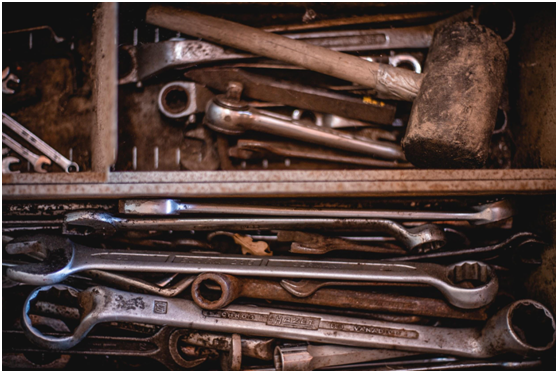Did you open your dishwasher only to see a sudsy puddle at the bottom? It happens when your dishwasher is not draining.
Before calling a service technician, here are 5 DIY fixes that can troubleshoot this issue:
- Clean the sink air gap.
The sink air gap is the chrome, small cylinder at the back of the kitchen sink. It avoids drained water to go back into the dishwasher.
Usually, when you run the dishwasher and water comes out of the air gap, the problem is a blocked air gap and garbage disposal. You can easily fix it yourself by removing the blockage.
Take out the air gap cap and clean the inside. Disconnect the hose found at the bottom of the air gap up to the garbage disposal. Ensure that they are not clogged with debris.
- Run the garbage disposal.
Sometimes, your dishwasher doesn’t drain when the garbage disposal is blocked. It is the drain hose that empties the garbage disposal.
When food settles in the garbage disposal or when food accumulates in the drainpipe, the water in the dishwasher stacks up. Try running the disposal. Sometimes it’s an easy solution to drain the dishwasher.
To avoid encountering this problem, make it a habit to run water in the disposal a few seconds after the debris is gone. It ensures that no food debris remains or stack up in the pipe or disposal.
- Clear detergents.
Use appropriate dishwasher detergent specifically for automatic dishwashers. There are different liquid, powder, pod or tablet detergents that can be used for this.
Using other kinds of detergents may cause sudsing that can hamper its wash performance. Using other detergents can also affect its draining mechanism due to too many suds.
Do not attempt to use laundry detergents at all. To fix this issue, simply put the right detergent and run it again.
- Check the drain hose.
One issue why the dishwasher is not draining is the drain hose. The drain hose is the ribbed plastic hose connecting the garbage disposal and the drain pump.
If this part is clogged, water can accumulate and not drain. First, you need to unplug the appliance. Always work on appliances when the power is already off.
Place old towels under the dishwasher. Locate the connection between the ribbed hose and the drain pump by removing the lower front panel.
It should show you the clogged portion. If the clog is located deeper, you have to replace it with a new hose.
Never use a plumber’s snake tool to unclog it. It can damage the hose entirely.
- Remove debris from the drain basket.
The drain basket of a dishwasher is found at the bottom of its interior. Simply take out the cover. Find out if there is food debris in the basket.
Use a spoon to remove the debris. Replace the cover. Restart the dishwasher.
You can prevent this problem by pre-rinsing your dishes with food debris before loading them into your machine. Although modern dishwashers have macerators that cut down soft wet food, they cannot do the same function of garbage disposal.
Make it a practice to rinse dishes before placing them into the dishwasher. It can prevent the same problem from occurring in the future. It also makes your machine more efficient.
If you tried these DIY tips but still your dishwasher is not draining, it’s time to call a technician that has the experience and expertise in solving this problem. Your dishwasher may be malfunctioning or some parts may be at fault.
Certified technicians are the only ones who can test the machine using a multimeter. They can recommend a replacement of one or two parts.
Some parts that need to be replaced include the motherboard, check valve, piston and nut assembly, drain pump and drain motor, pump solenoid, timer, door switch, or electric control. The good thing is that it is easy to replace the parts because most of them are available online.
Don’t worry because this issue is usually manageable. Dishwashers can serve you for many years even after repair. In case everything has been done and the problem still persists, it’s time to purchase a new dishwasher.
To protect your dishwasher and make it efficient, do annual maintenance each year. Clean the spray armholes and filter.
Monitor the dish racks for peeling off of the rubber sealant or cracks and many more. By doing these maintenance tips, you can extend the lifespan of your dishwasher.
